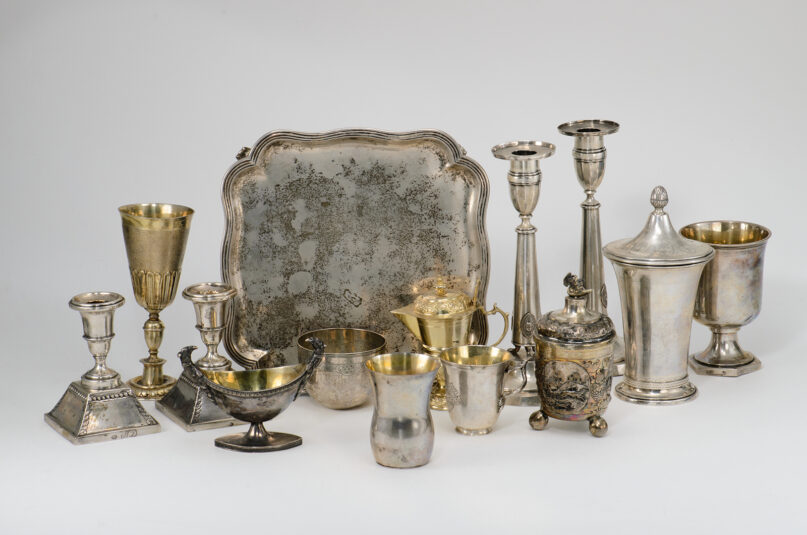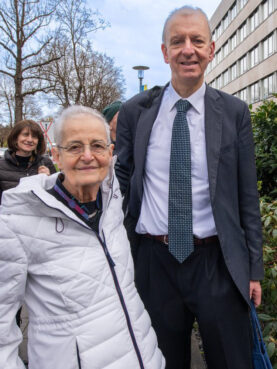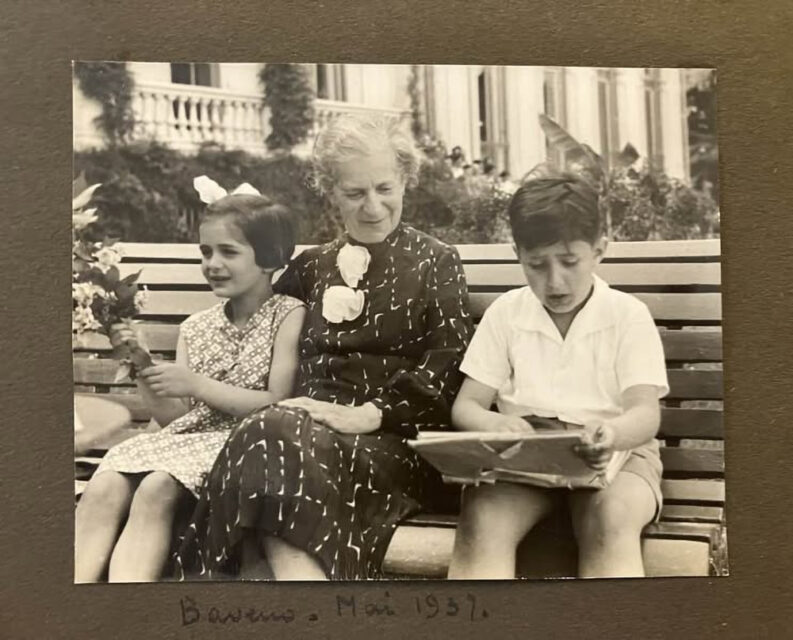(RNS) — The order came on Feb. 21, 1939, seven months before the start of World War II. All German Jews, it stated, “must surrender any objects made of gold, platinum or silver, as well as precious stones and pearls, in their possession.”
Most Jews complied, filling pawnshops across Germany with tons of precious metals — much of which were melted down and used to help Germany’s war efforts. But a tranche of items survived, including hundreds of household items: Shabbat candlesticks, kiddush wine cups, spice boxes, thimbles and lots of silverware, especially spoons and ladles, which made their way to museums across Germany.
AnnaMaria Abernathy, a Boston-area resident, knew nothing about the Nazi party’s “silver levy,” or “Silberzwangsabgabe.” But a few years ago, she learned that a silver kiddush cup belonging to Friedrich Sigmund Marx might now be hers. Abernathy had an uncle by that name, a former resident of Munich who died in the Theresienstadt labor camp.
Earlier this month, Abernathy, now 95, and her three daughters traveled to Munich for a conference put on by Matthias Weniger, a curator from the Bavarian National Museum who was working feverishly to return these pieces of silver to the descendants of Jewish families who surrendered their heirlooms as part of the Nazi silver levy.
The 76 family members who gathered in Munich came from Australia, the United Kingdom, the United States, Israel and Spain. They all had relatives who perished in the Holocaust — people like Abernathy’s aunt, uncle and grandmother, killed by the Nazis or their collaborators.

The family members at the conference had already received their heirlooms, but the Munich Conference on the 1939 Silver Levy and Reunion of Descendants was an opportunity for them to come together and share stories. The group visited a cemetery and a Munich synagogue. They heard from experts on the Jewish settlement in Bavaria and about what became of all the silver seized in the lead-up to the war.
“I thought it would be helpful to bring families together and to talk about these common or similar experiences and not be so isolated,” said Weniger who heads the museum’s provenance research.
There’s an urgency to those restitution efforts. “You come really close to the last owners in some instances,” Weniger said.
On Thursday (April 24), Holocaust Remembrance Day, Israel honors the estimated 220,800 living Holocaust survivors in over 90 countries around the world, according to a survey by the Claims Conference, a nonprofit that secures material compensation for Holocaust survivors. Those numbers are rapidly dropping as more survivors die each year.
RELATED: Some Pennsylvania Jews reminded of Tree of Life shooting after arson attack on Josh Shapiro’s home

The Bavarian National Museum is trying to speed up restitutions.
Beginning in the 1930s, the museum was allowed to acquire some 350 silver objects belonging to Jews. Most of the pieces were returned in the 1950s and 1960s, when German authorities let it be known that people could claim them. But about 110 silver objects remained.
Beginning in 2019, Weniger took over provenance research at the museum and began actively looking for the heirs.
The silver objects’ histories were mostly well-documented. They came from pawnshops that listed the names of the owners or had coded them in ways Weniger was able to decipher. Using the inventories, and a good bit of detective work, Weniger tracked down the descendants by combing through obituary and genealogy databases.
These prosaic objects were not Klimts, Picassos or Cézannes, artwork also confiscated from Jewish families by the Nazis and the subject of much media attention over the years. But they were intimately connected to the everyday lives of their owners. Weniger made several trips to the U.S. and to Israel to personally return the objects.
It turned out, the Kiddush cup thought to be owned by Abernathy’s uncle belonged to someone else. But by then, the rightful ownership of the cup had become secondary. Abernathy had already taken a great interest in the restitution project and asked Weniger to help her apply for memorial plaques for her grandmother, aunt and uncle. He was glad to help.
The city of Munich has placed 275 brushed stainless steel and gold-plated plaques called Erinnerungszeichen on buildings and street posts, honoring the 10,000 city residents who lost their lives during the Holocaust. Abernathy and her daughters attended the plaque dedications along with other conference members.

Abernathy was born in Germany, but in 1934, as the first Nazi discrimination laws took hold, her father, a banker, lost his job, as did many other Jews, and the family relocated to Italy. In 1939, months before the start of the war, the family secured visas to the U.S. and settled in Kansas City.
Abernathy’s paternal grandmother, Minna Hirschberg, and Minna’s daughter Erna and husband, Friedrich, or Fritz, were not so lucky. Minna and Fritz died in Theresienstadt; Erna was killed in Auschwitz. Confirmation of their deaths came only after the war.
“It affected my family very strongly,” Abernathy said in a phone conversation from the retirement community where she now lives. “I think I sort of blocked feelings about it.”
In the 1960s, Abernathy reconnected with second cousins on her mother’s side, now living in California, but then the families lost touch. Through the Munich museum’s restitution project, she reconnected with them.
“Rather than receiving a silver object we didn’t know existed or belonged to us, we have received a gift of gold in reconnecting our family,” Abernathy said at the ceremony unveiling the plaques earlier this month.

As for the kiddush cup, it ended up going to a family that had fled Germany in 1939 and settled in New York City. Abernathy met the granddaughter of the cup owner on the Munich trip.
Gabrielle Rossmer Gropman’s grandfather, named Sigmund Marx, survived the war and made it to New York City in 1940 with his wife, Emma. The cup owned by the couple in Munich likely dates back to the 17th century. Gropman said she decided the cup should go to her nephew who is living in New York City and has two small children.
Weniger has 20 pieces of silver left in the museum’s collection, and he is confident he will be able to return a dozen to descendants of the original owners. About seven or eight pieces will remain because the descendants either were not interested in reclaiming the objects or didn’t sign the paperwork.
Trained as an art historian in medieval and Renaissance art, Weniger said restitution work has become his true passion.
“This work is so different and so much more meaningful,” he said. “You cannot repair what happened, but you can at least contribute a bit. I think everyone should do this.”
RELATED: When America becomes a strange land
Original Source: